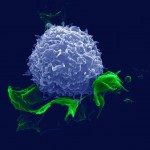Lien vers Pubmed [PMID] – 26449729
Gut 2015 Nov;64(11):1824-33
Chronic HCV infections represent a major worldwide public health problem and are responsible for a large proportion of liver related deaths, mostly because of HCV-associated hepatocellular carcinoma and cirrhosis. The treatment of HCV has undergone a rapid and spectacular revolution. In the past 5 years, the launch of direct acting antiviral drugs has seen sustained virological response rates reach 90% and above for many patient groups. The new treatments are effective, well tolerated, allow for shorter treatment regimens and offer new opportunities for previously excluded groups. This therapeutic revolution has changed the rules for treatment of HCV, moving the field towards an interferon-free era and raising the prospect of HCV eradication. This manuscript addresses the new challenges regarding treatment optimisation in the real world, improvement of antiviral efficacy in ‘hard-to-treat’ groups, the management of patients whose direct acting antiviral drug treatment was unsuccessful, and access to diagnosis and treatment in different parts of the world.

